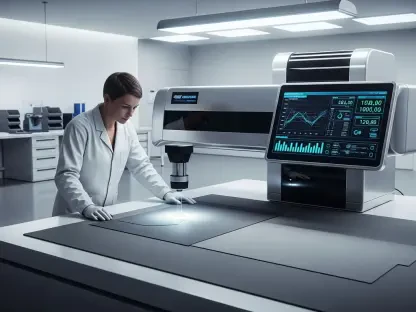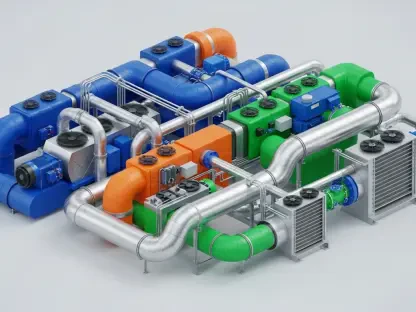In a remarkable stride toward revitalizing domestic manufacturing, a major pharmaceutical giant has unveiled plans for a transformative investment in Virginia, signaling a new era of economic growth and job creation in the region. This announcement comes at a time when the United States is keenly focused on strengthening its industrial base and securing critical supply chains, particularly in the healthcare sector. With a staggering $5 billion commitment to build a state-of-the-art facility just outside Richmond in Goochland County, this move not only underscores a corporate shift toward American soil but also highlights the intersection of policy incentives and regional development. The implications of such a substantial investment ripple far beyond the state’s borders, promising to reshape the landscape of pharmaceutical production while aligning with broader national goals of economic resilience and innovation.
Economic Impact on Virginia
Job Creation and Regional Growth
The decision to establish a $5 billion manufacturing hub in Goochland County is poised to deliver a significant economic boost to Virginia, with projections estimating the creation of 650 direct jobs and an additional 1,800 positions during the construction phase. This influx of employment opportunities is expected to invigorate local communities, providing stable, high-paying roles in a cutting-edge industry. Governor Glenn Youngkin has emphasized the state’s appeal as a prime destination for business, noting that Virginia has already attracted $140 billion in investments across multiple sectors since 2022. The pharmaceutical facility stands as a testament to the state’s strategic efforts to foster an environment conducive to corporate expansion, particularly in high-tech and innovative fields. Beyond immediate job numbers, the project is anticipated to stimulate ancillary businesses, from suppliers to service providers, creating a multiplier effect that could redefine the economic fabric of the region.
Strengthening Supply Chain Security
Beyond job creation, the new facility in Virginia plays a crucial role in bolstering the nation’s pharmaceutical supply chain, a priority that has gained urgency in recent years. By producing advanced therapies for conditions such as cancer and autoimmune diseases, the plant addresses a critical need for domestic manufacturing capacity, reducing reliance on foreign production. This move aligns with national objectives to ensure a steady and secure supply of essential medications, especially during global disruptions. Governor Youngkin has highlighted how this investment positions Virginia as a leader in safeguarding America’s health security while driving innovation in medical treatments. The presence of such a facility not only enhances the state’s reputation as a hub for cutting-edge industries but also contributes to a broader narrative of self-reliance in critical sectors. As production ramps up, the ripple effects could inspire similar investments, further solidifying the United States’ standing in global pharmaceutical markets.
Policy Influence and Corporate Strategy
Role of Tax Incentives in Domestic Investment
A pivotal factor behind this landmark investment is the influence of federal tax policies, specifically the Tax Cuts and Jobs Act, which reduced the corporate tax rate to 21%. According to company leadership, this reform has directly encouraged a shift in strategy, prompting the pharmaceutical giant to invest in U.S.-based facilities after a 40-year hiatus from such large-scale domestic projects. CEO David A. Ricks has described the current environment as a “Golden Age” for American industry, crediting tax incentives for enabling a historic $50 billion commitment to build nine new facilities nationwide. The White House has echoed this sentiment, with officials pointing to additional policy measures like the proposed Working Families Tax Cut as catalysts for economic growth. These initiatives are projected to deliver wage increases and tax relief for Virginians, with estimates suggesting benefits of up to $8,000 in wage growth and $3,554 in tax cuts by 2026, reinforcing the link between policy and corporate decisions.
Aligning with National Economic Goals
The Virginia facility represents more than just a corporate milestone; it embodies a strategic alignment with national goals to revive U.S. manufacturing and spur economic vitality. This $5 billion project is part of a broader vision articulated by both company executives and government leaders to prioritize American innovation and job creation. The White House has celebrated the investment as a direct outcome of pro-growth policies, framing it as a model for how legislative measures can attract substantial private sector commitments. Meanwhile, the scale of the nationwide rollout—described by Ricks as the largest in pharmaceutical history—underscores a renewed confidence in domestic production capabilities. This alignment between corporate strategy and government objectives highlights a shared commitment to building a robust economic foundation, with Virginia serving as a key battleground for showcasing the tangible benefits of such synergy. The focus now shifts to sustaining this momentum across other states and industries.
Reflections on a Transformative Milestone
Building on a Legacy of Progress
Looking back, the announcement of a $5 billion pharmaceutical facility in Virginia marked a defining moment in the intersection of corporate ambition and policy-driven growth. The collaboration between industry leaders, state officials, and federal initiatives created a powerful catalyst for economic transformation, setting a precedent for how targeted tax reforms could reshape business landscapes. Governor Youngkin’s administration played a pivotal role in positioning the state as a beacon for investment, while the company’s bold vision to expand domestic production resonated with national priorities. The jobs created and the supply chain fortified through this project stood as enduring symbols of what could be achieved when public and private sectors united with a common purpose. This milestone in Goochland County became a blueprint for future endeavors, illustrating the profound impact of strategic planning and legislative support.
Future Pathways for Industry and Policy
As the dust settled on this historic investment, attention turned to the next steps for sustaining and expanding such progress. Policymakers and corporate leaders alike faced the challenge of replicating this success in other regions, ensuring that the benefits of job creation and innovation reached a wider audience. Exploring additional incentives to encourage domestic manufacturing emerged as a critical focus, alongside efforts to address potential environmental and sustainability concerns tied to large-scale projects. Virginia’s experience offered valuable lessons on fostering partnerships that could drive long-term economic stability. Moving forward, stakeholders needed to prioritize investments in workforce training and infrastructure to support the growing demands of high-tech industries. By building on this foundation, the nation could continue to strengthen its industrial core, paving the way for a future where American innovation and resilience remained at the forefront of global competition.









